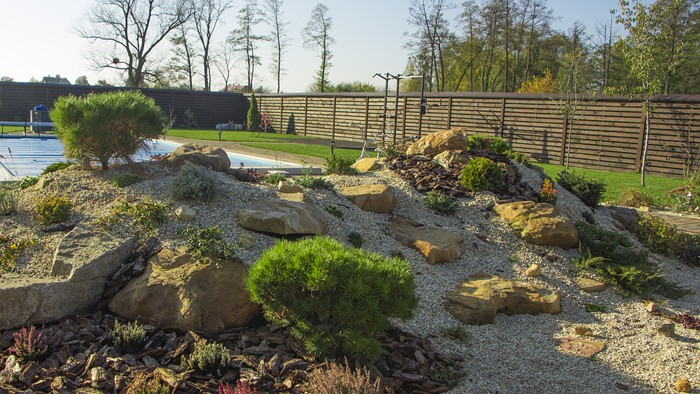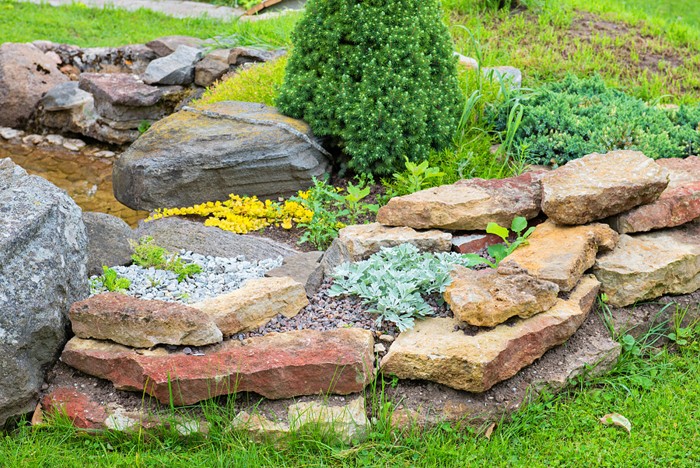How to choose a rock for a rock garden

When choosing a stone for an alpine rock garden, it is wise to look into nature, how the individual types of rocks are placed in it. It is the rock that has its own specific composition and that is what attracts us to it. In nature, observe how the stones and crushed stone are surrounded by soil and vegetation. After all, you want to have a rock garden that mimics the natural environment as much as possible.
The most frequently chosen types of rocks
- Granite and gneiss – mostly oval, round or at least rounded stones.
- Sandstones – have layered or block separation and are soft, they disintegrate after a few years.
- Travertines, limestones – they are the most suitable for rock garden – eliminate the defects of rock garden and plants grow well on them.
- Slate, boulders, phyllites – they literally run out of the terrain. They have the form of benches, breaks or steps and can be placed horizontally or vertically.
Main principles of selection
- In the rock, the stones must be uniform, that is, from one type of rock.
- Sharp break stones are not used, but those that nature has modified by erosion.
- Significantly colored rocks or crystals have no place on the alpine rock.
- Various “improvements” in the form of dwarves, mushrooms, castles and chateaux are considered as unsuitable.
Bet on boulders and large rocks

The predominant part of the rock garden is to be boulders measuring 25 – 60 cm. Stones of smaller or very small size will soon literally disappear in the rock garden. They are overgrown with plants or moss and in the end are not even visible. You can build an alpine rock garden more easily from large stones, which also have an incomparably better final effect. If you plant plants that normally reach a height of 20-30 cm, we let them grow and cover small stones up to 25 cm, the rock garden will look more like a perennial bed with a slight undulation.
Right -built rock garden

Stones will always prevail, or literally excel, with properly built rock gardens. In themselves, stones should look nice, even before you plant plants between them. Plants should only add and highlight the rock garden. In general, stones, gravel, or solitary conifer are to cover half of the rock area. The second part of the rock garden is to form rock plants of all kinds: creeping, mainly low. It is very interesting to impress low columnar juniper or some reasonably large grass among the rock plants.
Pay attention to the color of plants and their flowers. Too much variety is not recommended, it could have a kitschy effect on the rock garden. Make sure that bred garden cultivars do not predominate among the rock plants.
Text: Zuzana Bohdalová
Foto: Shuttersrock.com
Source: moje-bydleni.com
